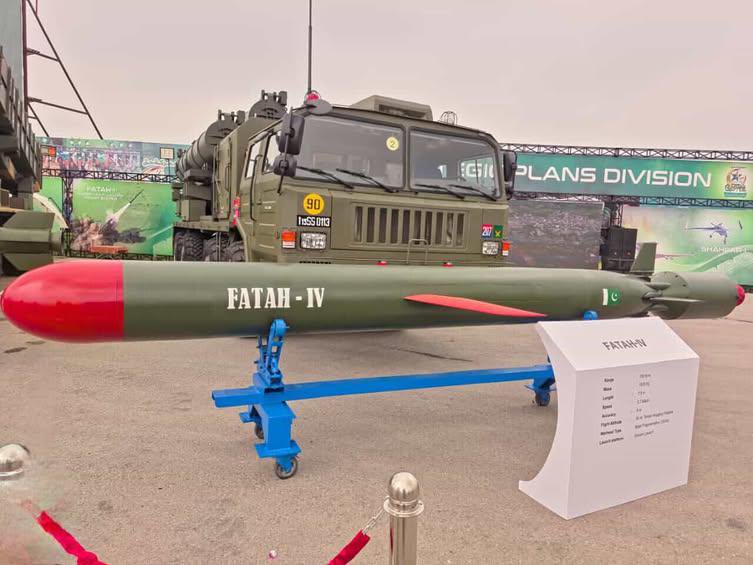Pakistan showcased its latest advancement in precision strike capability with the public unveiling of the Fatah-4 land-attack cruise missile (LACM) during the nation’s Independence Day celebrations at Jinnah Stadium, Islamabad. The missile marks a significant step in the country’s ongoing military modernization program.
It is worth noting that two mock-ups of the Fatah-4 missile system were displayed at different locations — one at Jinnah Stadium and another at Shakarparian Parade Ground — symbolizing the prominence of the new weapon in this year’s celebrations.
Alongside the missile mock-ups, Pakistan also showcased the Transporter Erector Launcher (TEL) for the Fatah-4. A single TEL vehicle is capable of carrying three launchers, a configuration similar to the Babur cruise missile system, enhancing mobility and rapid deployment capability.
Table of Contents
ToggleKey Specifications of the Fatah-4 Cruise Missile
The Fatah-4 is designed for long-range, high-precision strikes against strategic targets. Its notable features include:
-
Range: 750 kilometers
-
Cruise Speed: Mach 0.7
-
Accuracy: Circular error probable (CEP) of just 5 meters
-
Flight Altitude: As low as 50 meters to evade radar detection
-
Warhead: 330 kg blast-fragmentation payload
-
Dimensions: 7.5 meters in length; total weight of 1,530 kg
Strategic Role and Development
The Fatah-4 is the latest in Pakistan’s Fatah missile series and represents a conventional deterrence tool tailored for precision land-attack roles. Analysts note its similarities to the Babur cruise missile family but with refinements aimed at enhancing conventional strike capabilities rather than strategic nuclear roles.
Its low-altitude, terrain-following flight profile allows it to penetrate sophisticated air defense systems, making it suitable for engaging high-value and mobile targets.
Geopolitical Context
Defense experts view the unveiling of the Fatah-4 as a direct response to evolving regional security challenges, particularly in the context of India’s expanding military capabilities. The missile’s range and accuracy provide Pakistan with enhanced stand-off strike options, reinforcing its defensive posture while signaling technological progress in indigenous weapons development.












